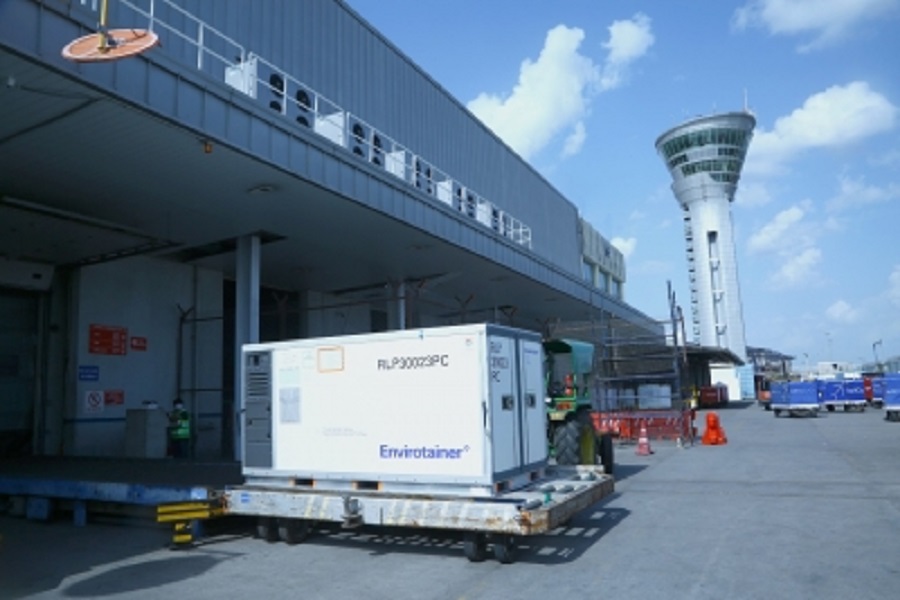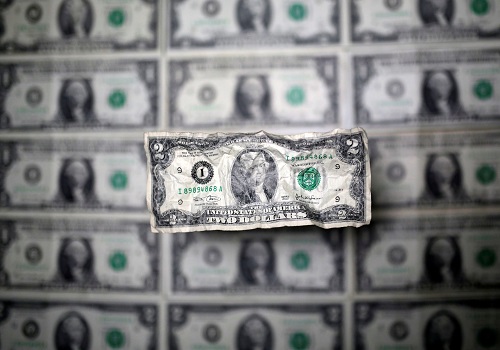Silver trading range for the day is 68175-72305 - Kedia Advisory

Gold:
Gold experienced a decline of -0.92%, settling at 61504, as a stronger-than-expected U.S. inflation report tempered expectations of an early interest rate cut by the Federal Reserve. The U.S. consumer prices for January surpassed projections, particularly in shelter and healthcare costs, prompting cautious remarks from several Fed officials, including Chairman Jerome Powell. Investors are now closely watching retail sales data on Thursday and producer price index (PPI) numbers on Friday, along with key comments from various Fed officials throughout the week. China's central bank, while slowing its gold purchases at the beginning of the year, continues on pace to potentially exceed its last buying spree nearly eight years ago. The World Gold Council notes that this marks the 15th consecutive month of China increasing its official gold reserves, although purchases are currently half the average since the central bank began its buying spree in November 2022. Total gold holdings now stand at 2,245t, nearly 300t higher than at the end of October 2022. In India, physical gold dealers charged premiums for the first time in four months, encouraged by increased purchases as local prices eased. The approaching Lunar New Year festival also boosted gold activity in China and other regions. Technically, the gold market is under fresh selling pressure, with a 0.83% increase in open interest, settling at 13718. Gold is currently finding support at 61140, and a breach below may lead to a test of 60770 levels. On the upside, resistance is anticipated at 62140, with a potential move above prompting a test of 62770.
Trading Ideas:
* Gold trading range for the day is 60770-62770.
* Gold dropped as investors continued to reassess the monetary policy prospects.
* US CPI increased 0.2% month-over-month in December, while the core CPI went up by expected 0.3%,
* China's central bank buys 10 tonnes of gold, extending its buying spree to 15 straight months
Silver:
Silver witnessed a significant decline of -1.93%, settling at 69639, following a U.S. inflation report that exceeded expectations, aligning with the sentiments of U.S. monetary policy hawks advocating for the Federal Reserve to hold off on lowering interest rates. The consumer price index for January rose 3.1% year-on-year, surpassing forecasts of a 2.9% increase and slightly lower than the December report's 3.4% rise. The Bureau of Labor Statistics reported a 0.3% increase in the Consumer Price Index for January, following a 0.2% rise in December. Federal Reserve Bank of Richmond President Thomas Barkin emphasized that the central bank has time to decide its next steps on monetary policy, waiting for further assurance that inflation is indeed returning to the target. Meanwhile, Boston Federal Reserve Bank President Susan Collins expressed a belief that the U.S. central bank will likely cut interest rates by three-quarters of a percentage point this year, contingent on data confirming the path to a 2% inflation rate amid a robust labor market. According to the latest Silver Institute report, global silver demand is projected to reach 1.2 billion ounces in 2024, marking the second-highest level on record, driven by industrial offtake. Technically, the silver market is under fresh selling pressure, with a notable 15.63% increase in open interest, settling at 31503. Silver is currently finding support at 68910, and a breach below may lead to a test of 68175 levels. On the upside, resistance is anticipated at 70975, with a potential move above prompting a test of 72305.
Trading Ideas:
* Silver trading range for the day is 68175-72305.
* Silver rose amid short-covering and demand is expected to improve.
* U.S. monthly consumer prices rose less than initially estimated in December
* Fed’s Barkin said the central bank has time to decide what’s next for monetary policy
Crude Oil:
Crude oil recorded a notable gain of 1.87%, settling at 6490, as uncertainty surrounding conflicts in the Middle East kept markets on edge. However, the upward momentum was tempered by concerns that sustained high-interest rates might weigh on energy demand. OPEC maintained its optimistic outlook for global oil demand in 2024 and 2025, with unchanged forecasts from the previous month. According to the monthly report, OPEC expects world oil demand to increase by 2.25 million barrels per day (bpd) in 2024 and by 1.85 million bpd in 2025. While OPEC's demand growth projection for 2024 surpasses that of other forecasters like the International Energy Agency, the wider OPEC+ alliance continues to implement production cuts to support the market. The report also highlighted a "positive trend" in economic growth, extending into the first half of 2024, leading to a 0.1 percentage point increase in OPEC's economic growth forecasts for both 2024 and 2025. OPEC now anticipates world economic growth of 2.7% in 2024 and 2.9% in 2025. Technically, the crude oil market is experiencing fresh buying, with a substantial 35.02% increase in open interest, settling at 7838. Crude oil is currently finding support at 6409, and a breach below may lead to a test of 6328 levels. On the upside, resistance is anticipated at 6544, with a potential move above prompting a test of 6598. Traders are closely monitoring these technical levels amidst ongoing geopolitical uncertainties and global economic conditions, which continue to shape crude oil's price performance.
Trading Ideas:
* Crudeoil trading range for the day is 6328-6598.
* Crude gains as uncertainty over fighting in the Middle East kept markets on edge
* OPEC sticks to 2024 oil demand growth forecast of 2.25 mbpd
* OPEC January output falls 350,000 bpd after new OPEC+ cuts
Natural gas:
Natural gas experienced a significant decline of -7.48%, settling at 139.7, driven by several factors including near-record output, abundant fuel in storage, a lower heating demand forecast, and declining global gas prices. The oversupply conditions were further exacerbated by low gas flows to U.S. liquefied natural gas (LNG) export plants, particularly due to the shutdown of a liquefaction unit at Freeport LNG's facility in Texas. The combination of near-record production levels, mostly warmer-than-usual weather, and lower heating demand (except for the mid-January Arctic freeze) enabled utilities to leave more gas in storage. According to financial company LSEG, gas output in the U.S. Lower 48 states increased to an average of 105.8 billion cubic feet per day (bcfd) in February, up from 102.1 bcfd in January but still below the monthly record high of 106.3 bcfd in December. Meteorologists projected a shift in weather conditions in the Lower 48 states, transitioning from warmer-than-normal to colder-than-normal on February 17-18 before returning to normal to warmer-than-normal levels from February 19-27. Anticipating seasonally colder weather, LSEG forecasted a rise in U.S. gas demand in the Lower 48, including exports, from 124.1 bcfd this week to 129.3 bcfd next week. Technically, the natural gas market is under fresh selling pressure, with a 1.07% increase in open interest, settling at 76831. Natural gas is currently finding support at 135.7, and a breach below may lead to a test of 131.6 levels. On the upside, resistance is anticipated at 147.1, with a potential move above prompting a test of 154.4.
Trading Ideas:
* Naturalgas trading range for the day is 131.6-154.4.
* Natural gas fell on near-record output, ample fuel in storage
* Lower heating demand forecast for next week is contributing to the decline in prices.
* Global gas prices are also slipping, adding to the downward pressure on natural gas prices.
Copper:
Copper prices experienced a marginal decline of -0.08%, settling at 707.65, influenced by various factors in the global market. LME daily data revealed that copper stocks in LME-registered warehouses reached their lowest level since September, following 850 tons of outflows. This decline in inventory signaled potential tightness in the copper market. The strengthening of the U.S. dollar, supported by robust labor data and hawkish remarks from Fed Chair Powell, exerted pressure on the purchasing power of key copper importers. Additionally, concerns over macroeconomic challenges in the Chinese economy, marked by the fourth consecutive contraction in the official manufacturing PMI data for January, further weighed on the outlook for base metals. Despite the challenges, the Caixin China General Manufacturing PMI unexpectedly stood at 50.8 in January, matching December's figure and surpassing market forecasts. It marked the third consecutive month of growth in factory activity, contrasting with official data that indicated prolonged weakness ahead of the Lunar New Year celebration. According to the International Copper Study Group (ICSG), preliminary data released in January suggested a 1% increase in world copper mine production over the first 11 months of 2023. Technically, the copper market is currently witnessing long liquidation, with a notable drop in open interest by -12.84%, settling at 5296. Copper is finding support at 705.4, and a breach below may lead to a test of 703.1 levels. On the upside, resistance is anticipated at 711.8, with a potential move above prompting a test of 715.9.
Trading Ideas:
* Copper trading range for the day is 703.1-715.9.
* Copper gains as LME stocks hit the lowest level since September after 850 tons of outflows.
* Yangshan copper premium declined as factories refrained from purchasing the metal
* Strong labor data in the US and hawkish remarks from Fed Powell lifted the dollar.
Zinc:
Zinc prices declined by -0.91%, settling at 206.7, reflecting recent challenges in the zinc market, particularly a rebound in inventories amid reduced demand triggered by China's property market uncertainties. On the London Metal Exchange (LME), zinc stocks surged by 14% over the past 10 days to reach a one-month high of 216,675 metric tons. This inventory increase follows an 18% decline in LME stocks between late December and late January. Meanwhile, zinc stocks on the Shanghai Futures Exchange rose by 21% in a week, partly attributed to restocking activities ahead of China's Lunar New Year holiday from Feb. 9-16. Additionally, the Russian Ozernoye mine, set to be Russia's largest zinc mine, has delayed zinc concentrate production until at least the third quarter of 2024, with a full capacity ramp-up expected in 2025. The mine has faced challenges from Western sanctions and a plant fire in November. Until there is a significant uptick in zinc demand and the market shifts its focus away from anticipated surpluses, price rallies triggered by production cuts are expected to face challenges in sustaining momentum. Technically, the zinc market is currently undergoing long liquidation, with a 6.97% drop in open interest, settling at 4656. Zinc is finding support at 205.2, and a breach below may lead to a test of 203.7 levels. On the upside, resistance is anticipated at 209.2, with a potential move above prompting a test of 211.7. Traders are closely monitoring these technical levels amidst evolving market dynamics and demand trends for zinc.
Trading Ideas:
* Zinc trading range for the day is 203.7-211.7.
* Zinc dropped as zinc inventories have rebounded recently.
* LME zinc stocks have climbed by 14% over the past 10 days to a one-month high.
* Weakness in the zinc market was also indicated by a discount of the LME zinc cash contract
Aluminium
Aluminium prices faced a decline of -0.52% yesterday, settling at 200.1, amid several significant factors influencing the market dynamics. A strong US dollar and pessimistic industrial sentiment in China, the world's largest consumer of base metals, continued to weigh on the outlook for aluminium. Persistent macroeconomic challenges in China, including a rise in deflation to a 14-year high and the fourth consecutive contraction in the official manufacturing PMI for January, contributed to the subdued sentiment surrounding industrial metals. Furthermore, the share of available aluminium stocks of Russian origin in LME-approved warehouses remained steady at 90% in January. Sanctions imposed by Britain against Russia restricted the physical delivery of Russian-made base metals for UK entities and individuals, impacting the availability of aluminium stocks in the market. Despite these restrictions, Russian metal continued to flow through LME-registered warehouses, albeit at reduced levels, with the amount of Russian primary aluminium stocks on LME warrant decreasing from December to January. From a technical standpoint, the aluminium market is undergoing long liquidation, with a notable drop in open interest by -7.77% alongside a decrease in prices by -1.05 rupees. Support for aluminium is observed at 199.4, with a potential test of 198.6 levels, while resistance is likely to be encountered at 201.6, with a possible move towards 203 upon surpassing this level. These technical indicators suggest a bearish sentiment in the market, influenced by both macroeconomic factors and technical dynamics.
Trading Ideas:
* Aluminium trading range for the day is 198.6-203.
* Aluminium dropped amid a strong US dollar and China’s pessimistic industrial sentiment
* Persistent macroeconomic headwinds in China, continued to hamper the outlook for metals.
* Share of Russian aluminium in LME warehouses remains at 90%
Cotton:
Cottoncandy prices experienced a marginal decline of -0.07% yesterday, settling at 58560, primarily driven by profit booking after recent gains. Concerns over supply dynamics and sustained cotton consumption had initially boosted prices. However, the latest U.S. cotton balance sheet indicates lower ending stocks relative to the previous month, with higher exports and lower mill use, contributing to market volatility. The export forecast has been revised upwards, reflecting a strong pace of shipments and sales, with ending stocks now estimated at 2.8 million bales. On the global front, world cotton ending stocks have decreased, with lower beginning stocks and production reducing overall supplies. Although world consumption remains virtually unchanged, shifts in consumption patterns across various countries have been observed. Notably, the CAI maintains estimates for domestic consumption and production for the 2023-24 season, with reports suggesting a decline in pink bollworm infestation in cotton crops across India. The USDA's weekly sales report revealed robust demand, with net sales for 2023/2024 surging by 69% from the previous week, led by strong demand from China and Vietnam. Exports have consistently exceeded expectations, reaching another marketing-year peak, indicating healthy global demand for cotton. From a technical standpoint, the market is under fresh selling pressure, with an increase in open interest by 0.96% alongside a slight price decrease. Support for Cottoncandy is observed at 58340, with a potential test of 58130 levels, while resistance is likely to be encountered at 58760, with a possible move towards 58970 upon surpassing this level. These technical indicators suggest a mixed sentiment in the market, influenced by both supply-side factors and technical dynamics.
Trading Ideas:
* Cottoncandy trading range for the day is 58130-58970.
* Cotton dropped on profit booking after prices gained spurred by concerns over supply
* USDA weekly sales report a 69% increase in exports from previous week
* CAI estimates domestic consumption for the 2023-24 season to remain flat at 311 lakh bales.
* In Rajkot, a major spot market, the price ended at 27011.6 Rupees dropped by 0 percent.
Turmeric:
Turmeric witnessed a modest uptick in prices yesterday, settling up by 1.06% at 14898, supported by reduced supplies in the spot market. The delayed harvesting of the new crop, coupled with tighter ending stocks, is expected to maintain positive market sentiments for turmeric in the near term. Despite slower export activity in recent months, the anticipation of increased demand ahead of upcoming festivals suggests a potential uptick in export volumes. However, the upside is limited as buying activities have slowed down in anticipation of stock releases ahead of the commencement of new crops. Pressure on prices is also evident due to improved crop conditions resulting from favorable weather conditions. Additionally, concerns among Maharashtra farmers over the location of PM Modi's Turmeric Board in Telangana have sparked discussions, reflecting shifting priorities among farmers and expectations for a decline in turmeric seeding in key producing regions. Similarly, turmeric imports during Apr-Nov 2023 dropped by 29.50% compared to the same period in 2022, with November 2023 recording a significant decrease compared to October 2023 and November 2022. From a technical perspective, the market is experiencing fresh buying, with an increase in open interest by 1.1% alongside a price increase of 156 rupees. Support for turmeric is noted at 14544, with a potential test of 14188 levels, while resistance is anticipated at 15168, with a possible move towards 15436 upon surpassing this level. These technical indicators suggest a bullish sentiment in the market, supported by both supply-side factors and technical dynamics.
Trading Ideas:
* Turmeric trading range for the day is 14188-15436.
* Turmeric prices gained supported by reduced supplies.
* Delayed harvesting of new crop and tighter ending stocks is likely to keep market sentiments up
* Export has been slow down in recent months and expected to increase in wake of series of festivals ahead.
* In Nizamabad, a major spot market, the price ended at 13886.4 Rupees gained by 0.01 percent.
Jeera
Jeera, or cumin, faced a notable decline in prices yesterday, settling down by -3.77% at 25545, primarily due to the anticipation of higher production in key cultivating regions such as Gujarat and Rajasthan. The current rabi season witnesses a significant expansion in jeera acreage, with farmers responding to record prices from the previous marketing season by increasing cultivation area substantially. In Gujarat alone, jeera cultivation has expanded by a remarkable 160% compared to the previous year, while Rajasthan has also seen a substantial 25% increase. This surge in cultivation area indicates a strong correlation between market prices and farmer behavior. Despite the higher production prospects, challenges such as lower water availability, fewer cold days, and concerns about pest attacks pose potential threats to the crop's yield. Additionally, the global demand for Indian jeera has slumped, with buyers preferring alternative origins like Syria and Turkey due to comparatively higher prices in India. This decline in exports is reflected in the data, with jeera exports during Apr-Nov 2023 dropping by 33.10% compared to the previous year. In terms of technical analysis, the market is undergoing long liquidation, with a drop in open interest by -1.35% alongside a significant price decrease. Support for Jeera is noted at 24820, with a potential test of 24080 levels, while resistance is anticipated at 26550, with a possible move towards 27540 upon surpassing this level. These technical indicators suggest a bearish sentiment in the market, influenced by both domestic production prospects and global demand dynamics.
Trading Ideas:
* Jeera trading range for the day is 24080-27540.
* Jeera prices dropped due to higher production prospects
* In Gujarat, Cumin sowing witnessed very strong growth by nearly 103% with 530,030.00 hectares against sown area of 2022
* Stockists are showing interest in buying on recent downfall in prices triggering short covering.
* In Unjha, a major spot market, the price ended at 31003.1 Rupees dropped by -0.05 percent.
Views express by all participants are for information & academic purpose only.























